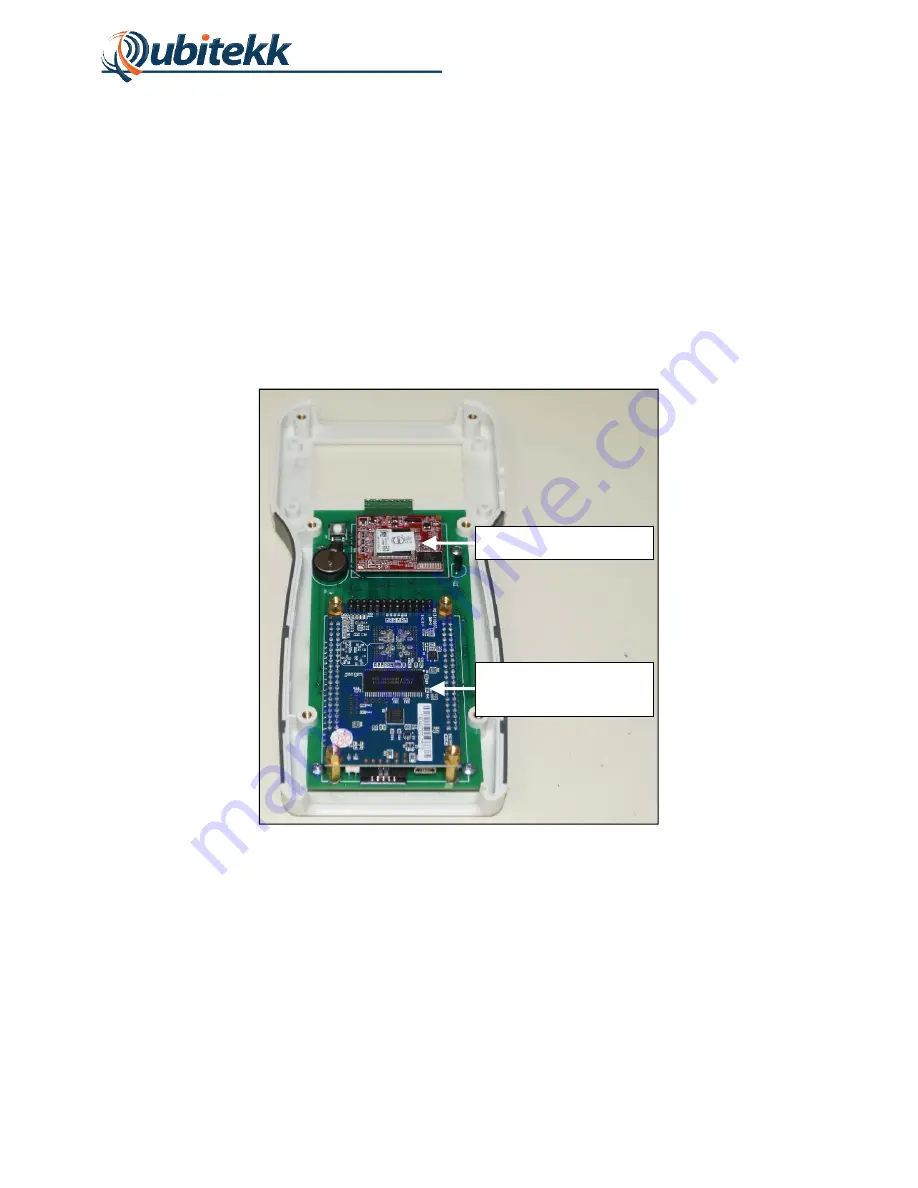
12
Customizing the CC1
4.1 Overview
The CC1 is an open-source platform that was developed to give as much flexibility to users as
possible. This means that the internal firmware that operates the device can be changed by the
user, if desired. Inside the CC1, two programmable electronic components are responsible for
most of the functionality of the CC1. They include:
A Rabbit RCM3400 Microprocessor
An Altera Cyclone IV FPGA
The location of these components inside the CC1 is shown below:
Figure 9. Internal view of CC1 electronics.
The RCM3400 microprocessor is used to implement the user interface (i.e. LCD display, menus,
serial communicatons, etc.) as well as some very simple calculations (i.e. accidentals). The
Altera FPGA is used for making high speed measurements (i.e. the coincidence counting).
These two devices can be independently programmed to realize new functionality for a wide
range of applications. For example, the CC1 device could be reprogrammed to timestamp every
photon detection event and create a histogram of the arrival times. Or two CC1s could be re-
programmed to act as a four photon coincidence counter (using the GATE channel as a
Rabbit
RCM3400
module
Altera
Cyclone
IV
FPGA
(on
DE0
‐
Nano
protoboard)
Summary of Contents for CC1
Page 1: ...CC1 Handheld Coincidence Counter USER S MANUAL Rev 1 02 June 1 2015 www qubitekk com...
Page 7: ...4 Figure 4 CC1 Buttons and Ports...
Page 23: ...20 APPENDIX A Electrical Schematics and Connections...
Page 24: ...21 A 1 Top Board LCD Display...
Page 25: ...22 A 2 Bottom Board FPGA and Microprocessor...
Page 26: ...23...
Page 27: ...24...






































